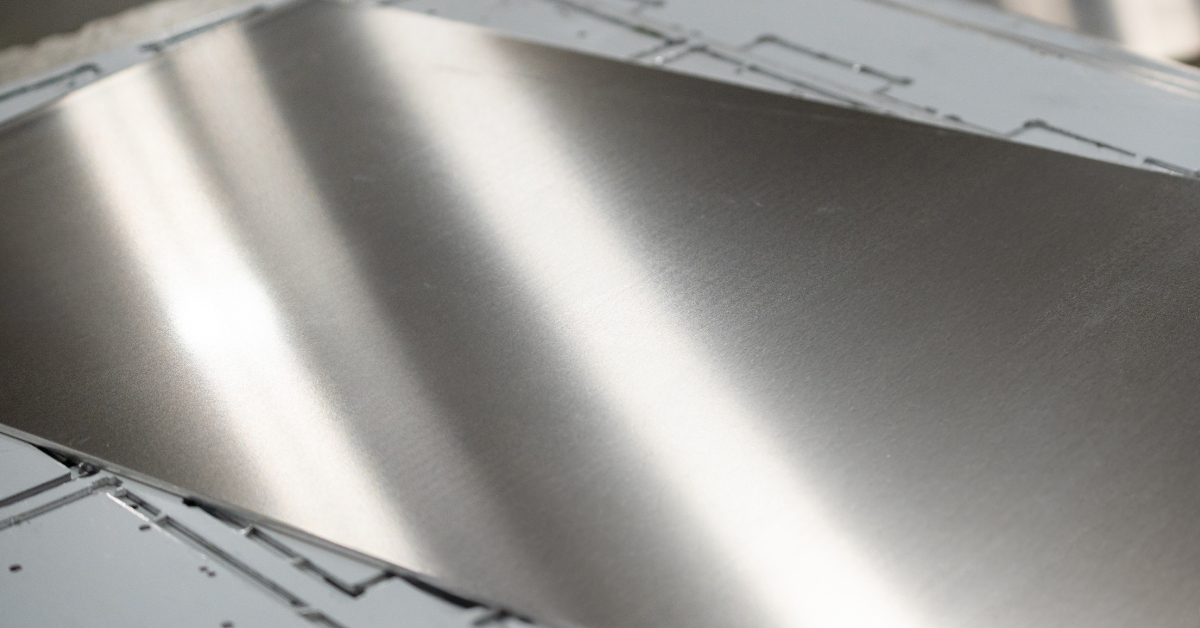Magnelis: characteristics and processing of the new steel

In the world of metalworking for electronics, innovation is a key element that enables the production of increasingly high-performance and durable components, designed to enhance and protect the electronic applications they house.
One of the materials that has garnered significant attention in recent years is undoubtedly Magnelis®, a special metallic coating made of zinc, magnesium, and aluminum. This material offers superior performance and remarkable versatility.
But what exactly is Magnelis®, and what are its distinctive characteristics? Let’s explore its features and determine the applications for which it is most suited.
Technical specifications of magnelis®: what is it and what are its characteristics?
Magnelis® is an alloy composed of 93.5% zinc, 3.5% aluminum, and 3% magnesium. It is applied to the surface to be treated (sheet or profile) through a hot-dip process in molten metal with the zinc-aluminum-magnesium chemical composition described above.
This unique combination of metals gives Magnelis® its distinctive properties, making it one of the most resistant materials to harsh environments and highly durable over time.
Key Characteristics:
- Exceptional Corrosion Resistance
The presence of magnesium creates a robust surface protective layer capable of withstanding the most extreme conditions. Tests show that Magnelis® has approximately three times the corrosion resistance of traditional galvanized steel, even in environments containing substances such as ammonia or chloride. - Reduced Weight
Its excellent corrosion resistance also allows for a thinner coating on sheets or profiles. This results in significant weight reduction and easier handling and workability of the components, making it a valid alternative to post-galvanization. - Self-Healing Properties
One of the most intriguing characteristics of Magnelis® is its self-healing and self-repairing capability. If scratched or superficially damaged, the coating regenerates itself thanks to the 3% magnesium content, providing a crucial advantage in terms of mechanical wear resistance. For example, Magnelis®-treated parts self-repair at the edges during punching or cutting operations. - Eco-Friendliness
The zinc content in Magnelis® is lower than in pure zinc coatings, which reduces the zinc runoff rate into the soil. These features make this alloy an environmentally friendly choice.
Applications of magnelis steel
Magnelis® is extremely versatile and can be used in a wide range of applications. Its main uses include:
- Mechanical components for electronics
Ideal for components requiring high resistance to corrosion, humidity, or exposure to aggressive chemicals (e.g., racks, mechanical enclosures for electronic devices, support structures). At Elmec, we design and manufacture metal structures for electronics applications in various sectors, such as vision systems, rail transport, industrial automation, lighting, robotics, and HMI. - Infrastructure and construction
Suitable for infrastructures exposed to severe atmospheric conditions, such as bridges, towers, fences, and road barriers. - Automotive structural components
Used in internal or external structural components subjected to mechanical stress and atmospheric challenges. - Agricultural machinery and structures
Ideal for structures and machinery that require corrosion resistance and the ability to withstand diverse weather conditions. - Architectural design
Used for facades, roofing, urban furniture, or design structures, leveraging its versatility, aesthetic quality, and long-term resistance. - Energy and environmental sectors
Perfect for robust, corrosion-resistant structures with long-lasting durability, such as components for energy plants or water treatment facilities.
Magnelis® integrates seamlessly into industrial processes, offering efficiency, ease of processing, and reduced maintenance requirements in both production and subsequent handling.
Aluzinc vs. Magnelis: what are the differences?
Comparing Magnelis® with Aluzinc highlights the differences and strengths of each material. Both provide excellent resistance to corrosion and abrasion, but with some distinctions.
- Composition: Magnelis® uses a zinc-aluminum-magnesium alloy, while Aluzinc consists of aluminum, zinc, and silicon. The magnesium in Magnelis® gives it superior resistance, self-healing capabilities (absent in Aluzinc), and greater longevity.
- Applications: Both materials are versatile across diverse sectors, but Magnelis® is the best choice for applications in corrosive environments.
Elmec’s use of magnelis®
Our production department is fully equipped to handle all stages of Magnelis® processing, integrating this material into the design of your mechanical components for electronics. Its properties make it indispensable for creating robust, versatile, cost-effective, and lightweight devices.
We have the technical expertise and the necessary tools to process this material with the care required to preserve its properties. Operating across various sectors, our flexibility allows us to provide solutions that meet your specific needs.
In addition to Magnelis®, our core materials include carbon steel, stainless steel, other pre-treated steels (such as Aluzinc), copper, brass, and various aluminum alloys. We perform essential operations internally, such as cutting, bending, finishing, fastener application, milling, and extrusion. Moreover, our extensive network of external partners significantly expands our production capabilities to meet your requirements.